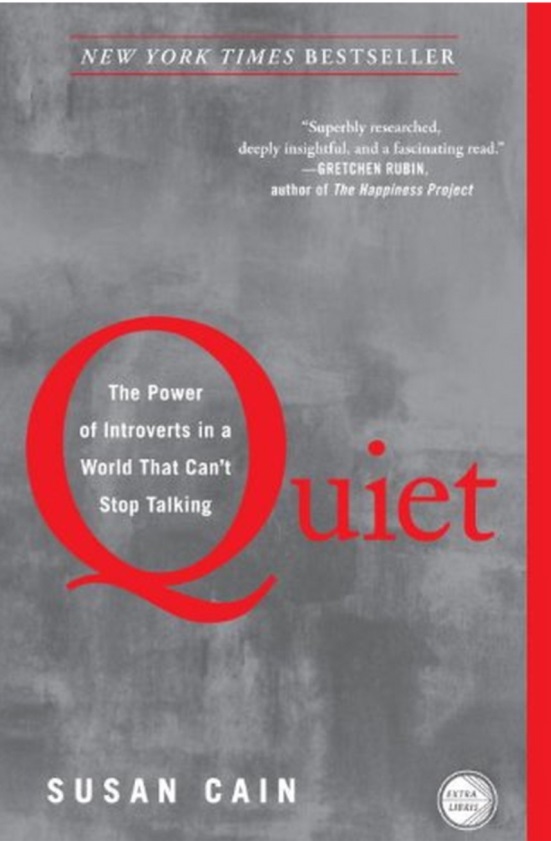Blog
Finding the right “voice”
“Speak up.” “I’d love to hear you share.” “Everyone must participate.”
These, among countless others, are words that reticent students hear in almost all of their classes. Teachers often push students to participate, share with their peers, and speak in front of the classroom, without stopping to wonder what prevents these students from sharing their ideas.
 Susan Cain addresses these ideas in her book, Quiet: The Power of Introverts in a World That Can’t Stop Talking. In Quiet, Cain discusses the differences between extroverted and introverted personalities, while noting that our society has a tendency to praise the “extrovert ideal.” We commend charismatic people who are willing to speak out in favor of their opinions. At the same time, we encourage those who are more soft-spoken to be more like their outspoken peers.
Susan Cain addresses these ideas in her book, Quiet: The Power of Introverts in a World That Can’t Stop Talking. In Quiet, Cain discusses the differences between extroverted and introverted personalities, while noting that our society has a tendency to praise the “extrovert ideal.” We commend charismatic people who are willing to speak out in favor of their opinions. At the same time, we encourage those who are more soft-spoken to be more like their outspoken peers.
Cain acknowledges the advantages of having an extroverted personality – the ability to work with others, make good first impressions, and collaborate on ideas. However, she also asserts that our tendency to push this personality type has many flaws. She maintains that people benefit from individual “think time” before moving into group work. She also provides evidence that introverted people tend to act less impulsively and that they fully think through their decisions prior to taking action. These quiet people who are often overlooked at a meeting, tend to have great ideas, but lack the confidence to speak up and share them.
Now, what does all of this have to do with executive functioning? It has to do with students’ confidence and the strategies that are used to prepare these students. Cain argues that there are ways to overcome our fears of speaking out by formulating strategies and extended periods of practice. We can think of our students with executive functioning challenges in the same light. As parents and educators, we must remember that our students are not standing by because they don’t want to get something done. Often times, they are unsure of how or where to start and we can think of this just like a fear of public speaking. We can best help our students by figuring out which strategies work for them and teaching them how to apply these skills in all of their classes.
Think of a child who is stuck on an assignment. Now, what is really going on? The student might not understand directions, might not know how to organize their work or might not know where to begin. The easiest, and quickest, solution would be to do the assignment with them and explain the work. But what happens the next time they get stuck? We’re right back where we started. So, how do we break this cycle?
We do our students a disservice by not teaching them how to complete their work and this is exactly how we can break the cycle. We need to teach our students strategies to use when they get stuck. We can practice these strategies and eventually our students will feel confident using them on their own. We will boost their confidence and overcome these struggles once our students see what they can accomplish on their own. As Cain suggests, our quiet students are not sitting idly by because they can’t speak out to the class. We just need to find the right way to help them feel prepared for this speech, for this project, or any other assignments.
Cain concludes by writing, “The secret to life is to put yourself in the right lighting. For some it’s a Broadway spotlight; for others, a lamplit desk. Use your natural powers – of persistence, concentration, insight, and sensitivity – to do work you love and work that matters. Solve problems, make art, think deeply.” Make sure to find where your child shines and use this passion as a motivator. Discover which strategies work for them, how to utilize these strengths, and how to make them feel the most confident in their schoolwork. We can use this passion to aid in their academic skills and build a strong sense of confidence in all areas of our students’ lives.

